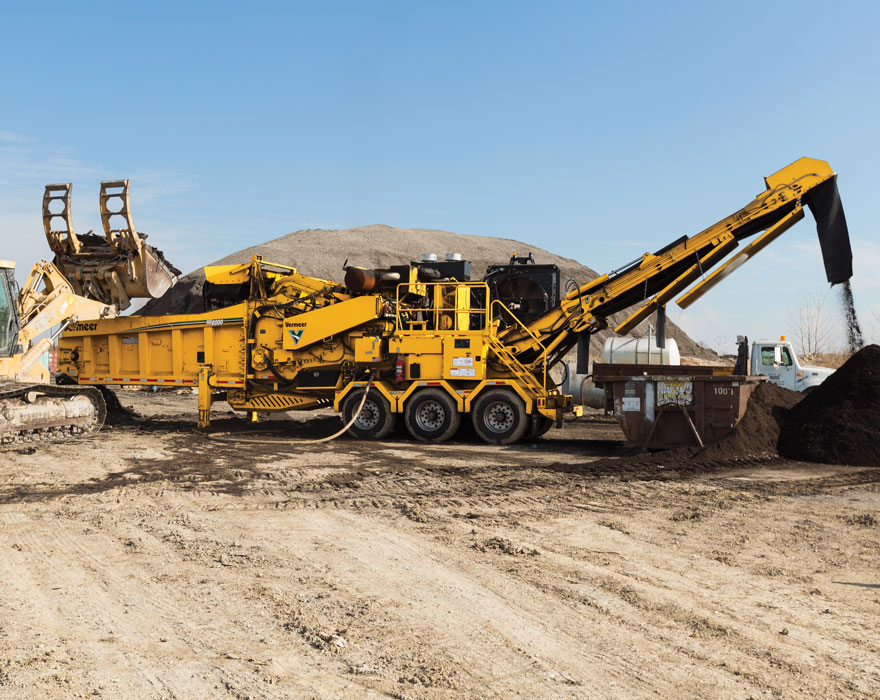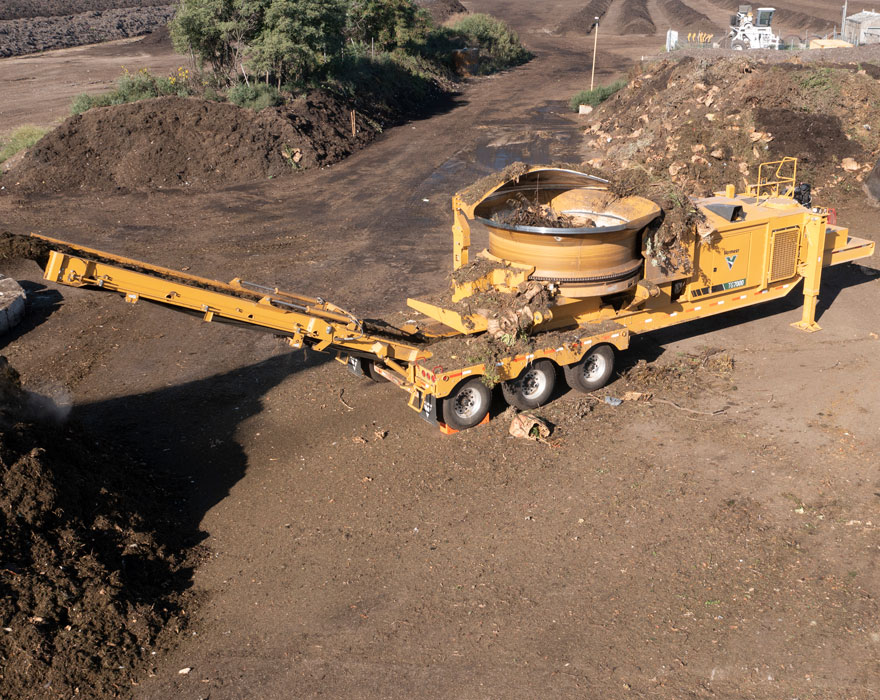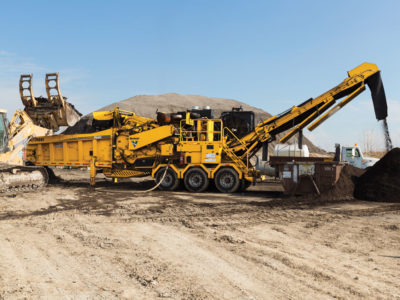For tree care contractors who are managing a substantial amount of tree waste, purchasing a Vermeer grinder may be the next step in growing the business. When contemplating a significant purchase like that of a horizontal grinder or tub grinder, questions and concerns may arise along the way. Here are a few important factors to consider when planning the purchase of your first grinder or upgrading to a larger model.
When to buy
Recently, tree care companies have been facing rising disposal fees at landfills and wood waste facilities. These fees can vary in price per ton, which is not only increasing the business expenses but also impacting the cost of service to the customer. These disposal fees can add up quickly, especially if operators are removing trees at a high rate. The most significant benefit of purchasing a Vermeer grinder is minimizing the disposal fees and turning an expense into another business opportunity for the company.
Investing in a Vermeer grinder gives tree care contractors the ability to sell tree chippings to a local mulch producer or double grinding it to produce mulch for landscapers and homeowners. When comparing the costs of disposal fees and the purchase of a grinder, Recycling and Forestry Sales Manager Ted Dirkx says: “Tree care contractors might end up paying a couple hundred thousand dollars in disposal fees, when they could instead be making a monthly payment on a grinder. While at the same time, selling the chippings or mulch as a cost-free raw material.” Of course, there are expenses that will arise when purchasing a grinder including, but not limited to, maintaining the machine and hiring an operator. For many contractors, being able to cut down on disposal fees can optimize your operation’s efficiency.

What to consider
An issue that many tree care contractors are running into is having adequate space to store mulch between grinding and selling. It is no secret that it takes a significant amount of space to grind, store and stockpile mulch throughout the year, especially when the majority of mulch is sold between March and June. Tree care contractors are stockpiling mulch from end of summer until spring, which is no simple feat, especially if there is limited real estate opportunities in the area. Exploring options for mulch storage is essential before the purchase of a grinder and may determine the future grinding capacity of the business.
Completing a market evaluation in the geographic area is crucial when considering adding a grinder to the operation. For contractors who live in an area with few mulch suppliers, double grinding and selling mulch in bulk to landscaping companies and homeowners may be an opportunity to expand and diversify the business. If there are already mulch processors but they lack the tree waste materials, grinding and then selling the tree chippings to the processor would be another business opportunity. Identifying what supplies are lacking for landscapers, homeowners and mulch processors will help to decide if purchasing a grinder will better serve that audience and your business long term.

What you need
Having the right equipment to handle the tree waste material is imperative before adding a grinder to your fleet. A recent trend in the tree care industry is companies transporting the tree waste to their site and forego chipping all together.
“We are seeing some tree care companies use alternative methods of chipping,” explained Dirkx. “They are cutting the tree into chunks, using a mini skid steer to move the chunks and then using a grapple truck to grab the material and load the tree waste. Once the waste is loaded into the truck it will get hauled to the company yard or disposal site and eventually get put into a grinder.” This method could be an option for tree care contractors who may not have the space to store the chippings.
Depending on the disposal method used, it will be beneficial to have versatile machinery alongside a grinder. Contractors will likely need equipment such as an excavator, wheel loader and mini skid steer. If expanding into the colored mulch segment, owning coloring equipment is a necessity. Of course, not all these machines are essential, but having support equipment can create a diverse jobsite and the ability to branch into other segments within the recycling and forestry industry.
Now more than ever before we are seeing tree care contractors start out as primarily removing tree waste, and transition into a mulch business. With a horizontal grinder or tub grinder, operators can create a raw material that can be marketed in different ways, with tree waste that is already available. If you are considering expanding into the mulch business, it is imperative to evaluate what you have now and what you may need to decide when it is time to buy. Look to Vermeer for innovative and versatile grinders that offer electric and diesel engine options and multiple sizes to fit the needs of your business. Whether it is your first grinder or an upgrade to a larger size, Vermeer will provide powerful grinding capabilities with cutting-edge technology.
For more information about Vermeer grinders, contact your local dealer.
Vermeer Corporation reserves the right to make changes in engineering, design and specifications; add improvements; or discontinue manufacturing at any time without notice or obligation. Equipment shown is for illustrative purposes only and may display optional accessories or components specific to their global region. Please contact your local Vermeer dealer for more information on machine specifications.
Vermeer and the Vermeer logo are trademarks of Vermeer Manufacturing Company in the U.S. and/or other countries. © 2022 Vermeer Corporation. All Rights Reserved.
